ARKALYK – In a landmark event for biodiversity conservation, the Czech Air Force aircraft delivered three Przewalski’s horses to Arkalyk city in northern Kazakhstan in the early morning on June 4. The Astana Times had a chance to witness the historic moment.
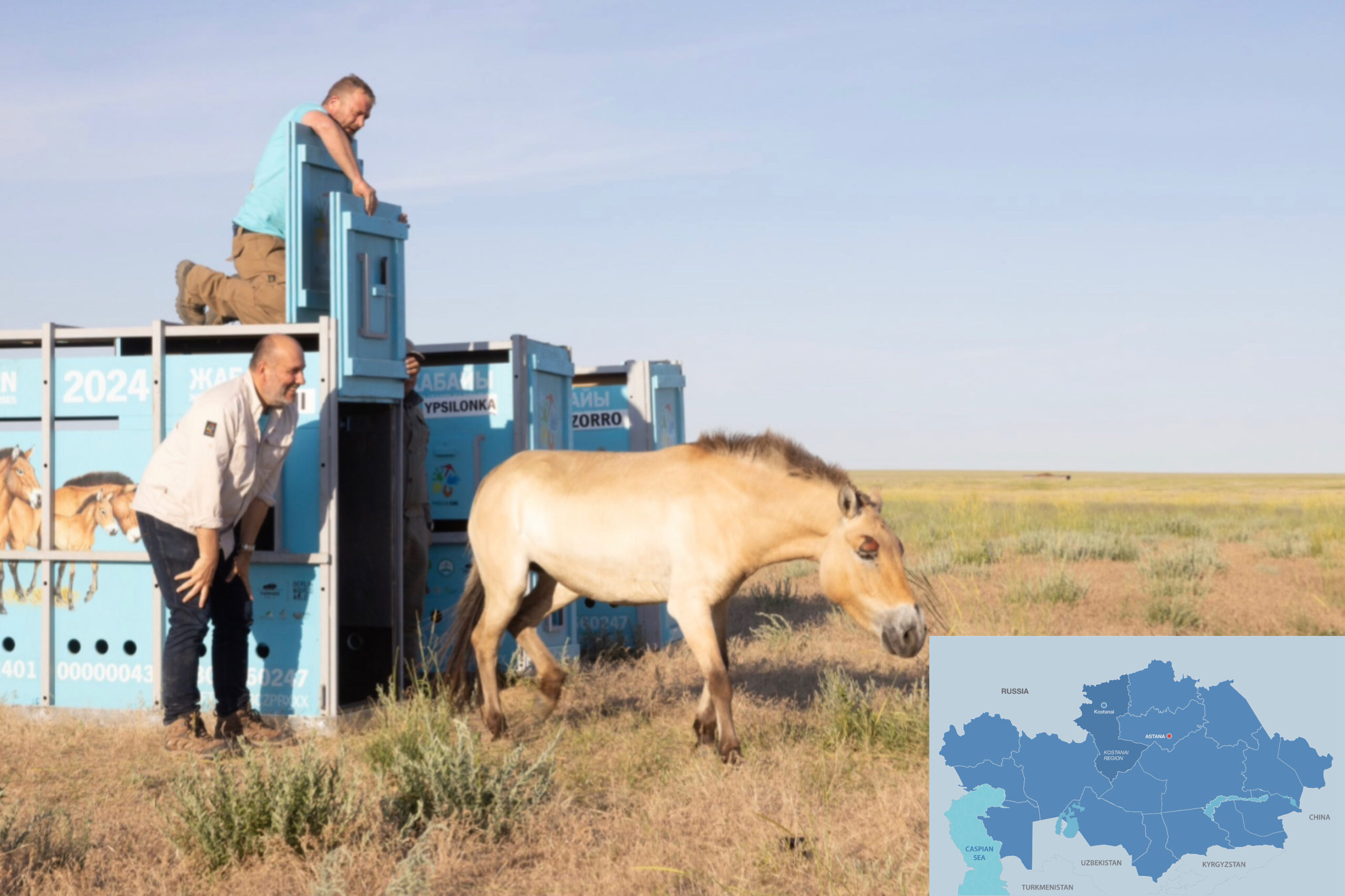
Miroslav Bobek while releasing the first Przewalski’s horse into the Altyn Dala reserve. Click to see the map in full size. The map is designed by The Astana Times.
Three-year-old Zeta II, four-year-old Ypsilon, and Zorro – these are the names of the first Przewalski’s horses, which were delivered by the Prague Zoo in cooperation with the Army of the Czech Republic.
This marks the first stage of the ambitious Return of Wild Horses project, which is spearheaded by the Prague Zoo, the Association for the Conservation of Biodiversity of Kazakhstan, and the Kazakh Ministry of Ecology and Natural Resources.
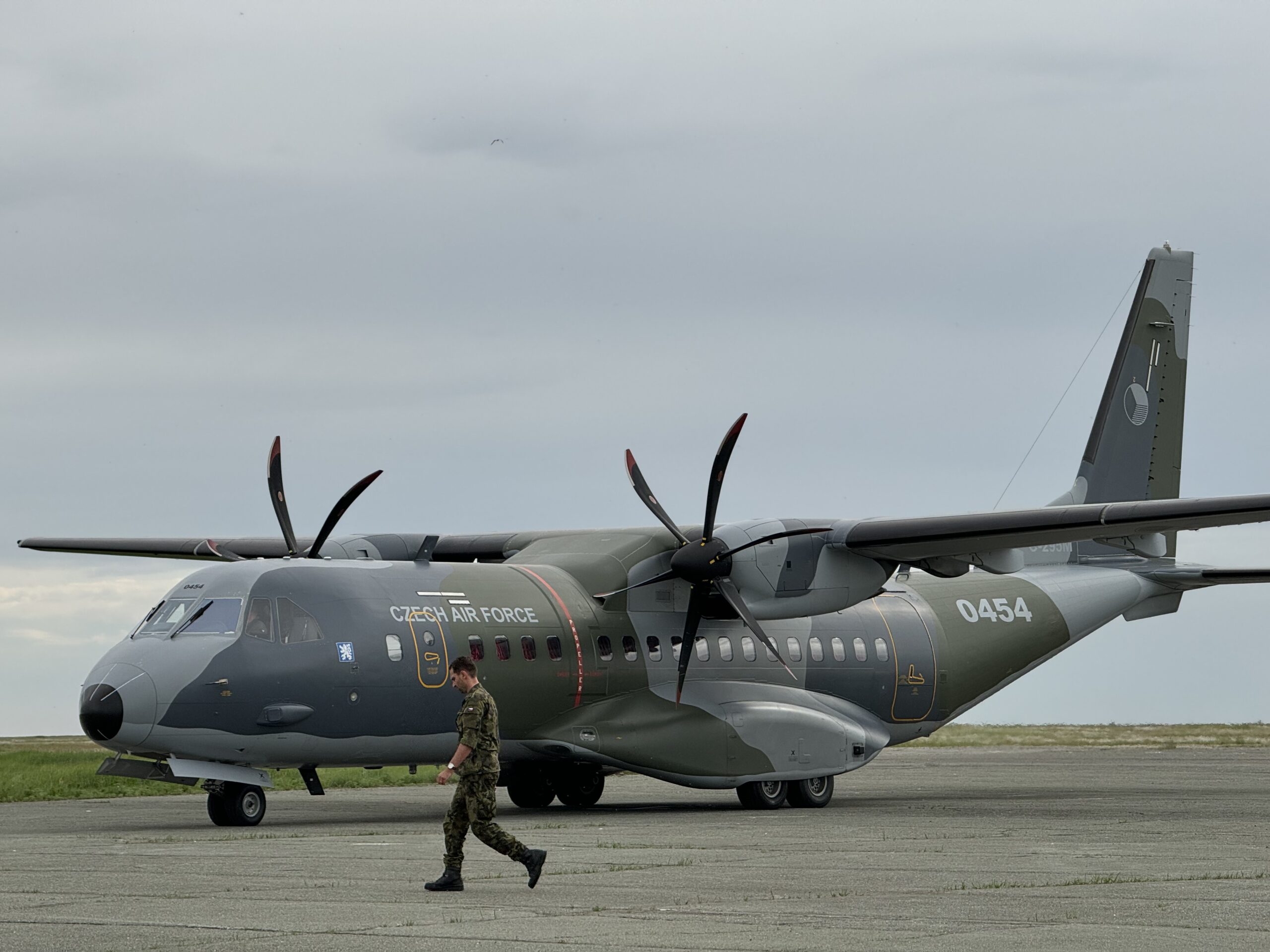
The Czech Air Force aircraft landed in Arkalyk on June 4. Photo credit: Assel Satubaldina/ The Astana Times
The trio of horses were transported from the Prague Zoo breeding station, followed by a 15-hour flight from Prague-Kbely Airport with stopovers in Istanbul and Baku. The horses were unloaded from the aircraft and loaded with a crane onto the truck at the airport in Arkalyk. Witnessing the process, we could hear the sounds of horses emanating from the boxes, as if they eagerly awaited their release.

Minister of Ecology and Natural Resources Yerlan Nyssanbayev, Ambassador of the Czech Republic to Kazakhstan Pavol Šepel’ák and the Kostanai Region governor Kumar Aksakalov were also present. Photo credit: Assel Satubaldina / The Astana Times
However, they still had a nearly eight-hour drive through often challenging terrain to the Alibi reproduction center in the Altyn Dala nature reserve. This center will be their new home as they adapt to the Kazakh steppe.
The aircraft was due to transport four horses, but one of them was found restless in the transport box in Prague. Four more horses are expected to be sent from Berlin by the local zoo. The aircraft has been delayed due to technical issues.
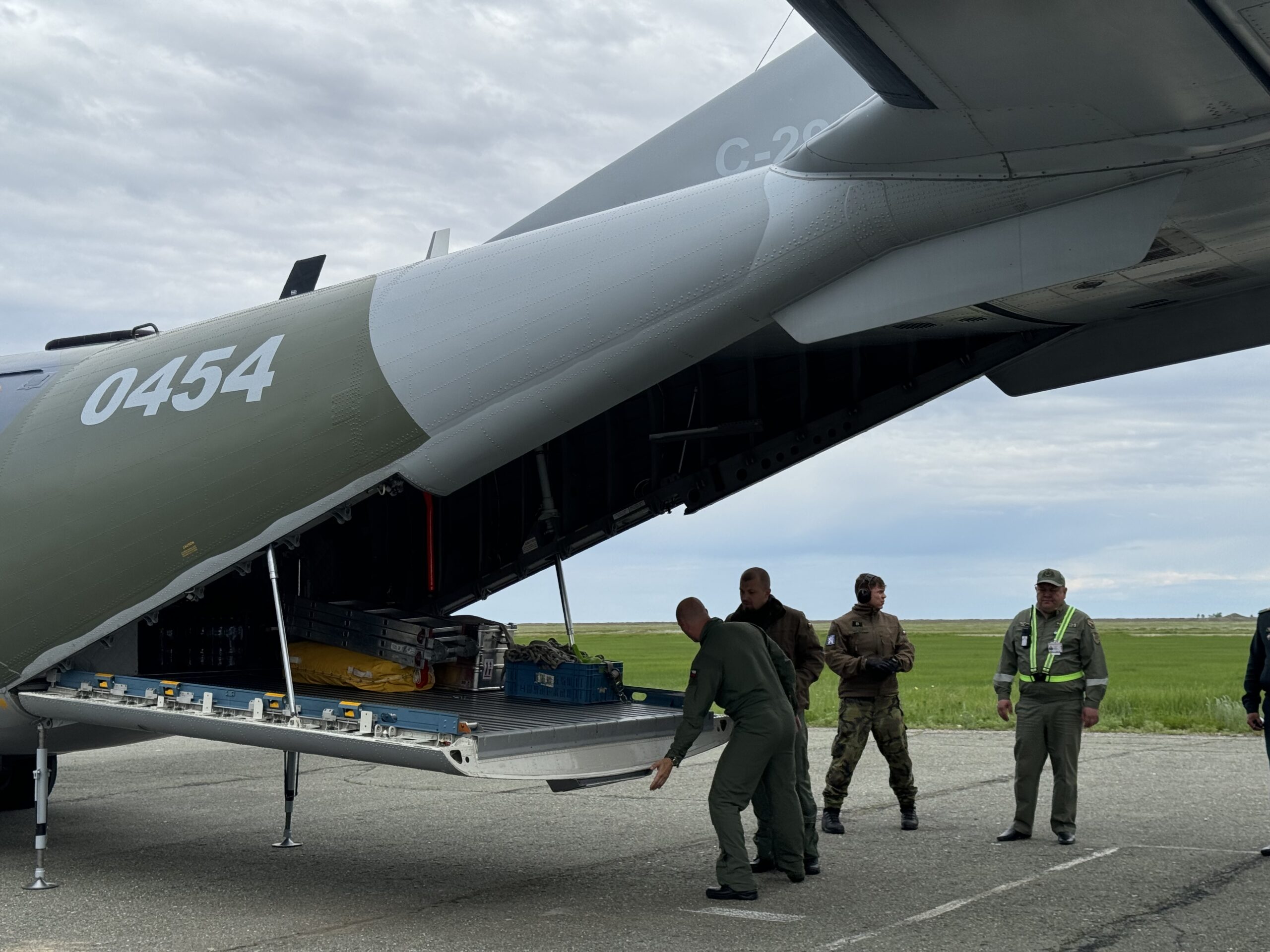
Once the aircraft landed, it had to pass customs procedures. Photo credit: Assel Satubaldina / The Astana Times
The project, first initiated by the Prague Zoo and Bratislava Zoo and the then Kazakh ambassador to Slovakia Roman Vassilenko in 2021, received a major boost when a relevant memorandum of understanding was signed during Czech Prime Minister Petr Fiala’s visit to Astana in April 2023.
This initiative aims to reintroduce Przewalski’s horses, a species once extinct in the wild, back to their native habitat in Kazakhstan.
Under the initiative, in the next five years, around 40 horses will be delivered to Kazakhstan.
Przewalski’s horses are the last truly wild horses native to the steppes of Kazakhstan, Mongolia, and China. They are named after the Russian explorer Nikolai Przhevalsky, who described the species in the late 19th century.

Czech officers prepare to smoothly carry the transport boxes with horses onto the trucks. Photo credit: Assel Satubaldina / The Astana Times
In the wild, Przewalski’s horses, which weigh between 250 to 360 kilograms, live in small harems of 10-15 individuals led by a stallion. They are stockier than domestic horses, with a robust body, a short neck, and a large head. They have a distinctive dun coat with a pale belly, dark legs, and a dark, erect mane with no forelock.
Przewalski’s horses disappeared from the wild at the end of the 1960s. Luckily, a dozen horses survived in zoos and nature reserves. Przewalski’s horse would have been extinct without reintroduction programs and zoo-based conservation. All animals living today are descendants of just 12 wild-caught horses.
The wild horses are reintroduced to Kazakhstan using the experience from Prague Zoo’s previous reintroductions to Mongolia. According to data from the zoo’s official website, the zoo has bred over 200 foals since 1959, when it was tasked with managing the species’ international studbook. The first transport took place in 1988 in China.
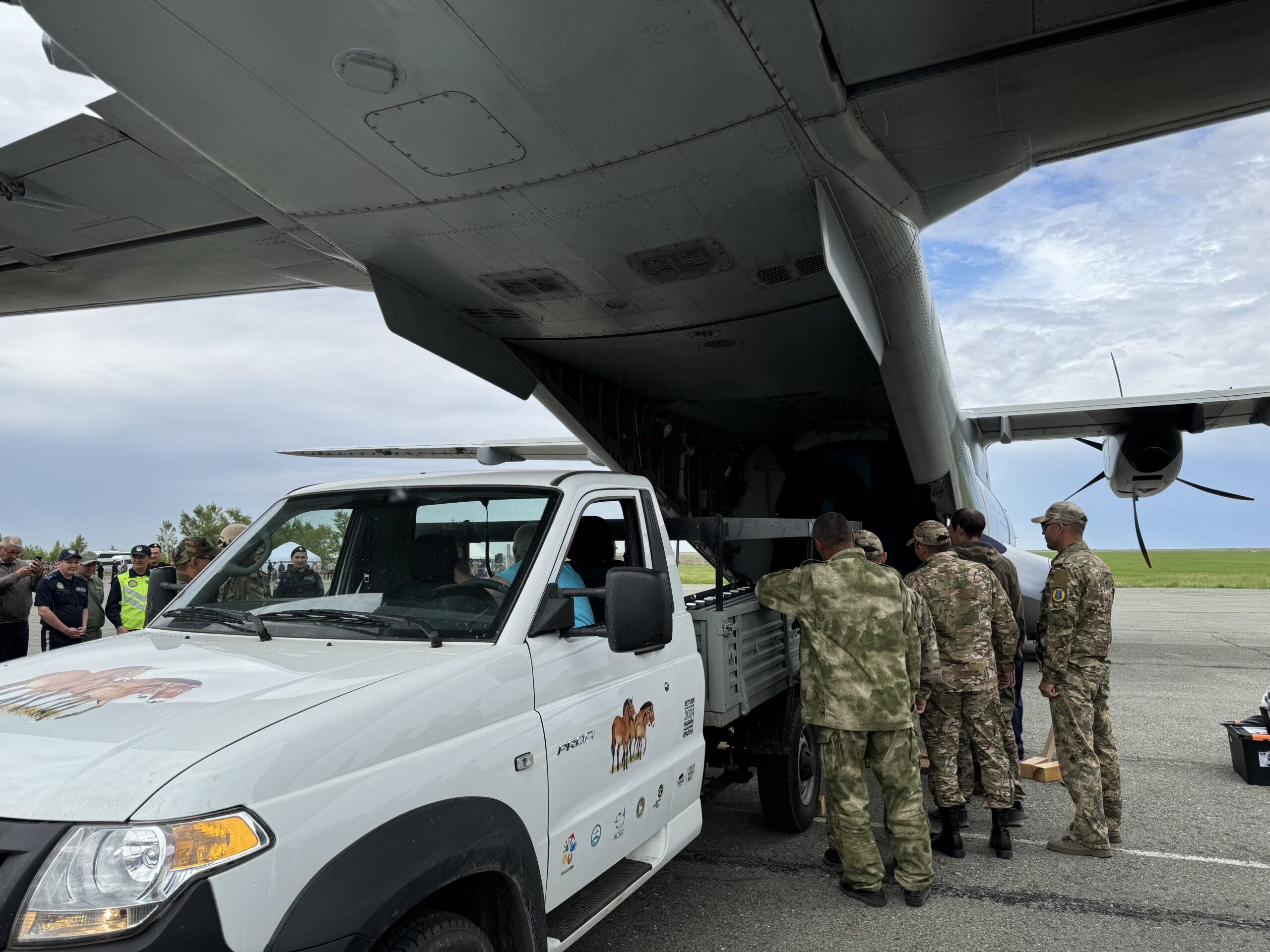
The Kazakh officers come to help their Czech colleague to move the horses onto the trucks. Photo credit: Assel Satubaldina / The Astana Times
“A few years ago, we carried out nine to ten transports of Przewalski’s horses to Mongolia,” said the director of the Prague Zoo, Miroslav Bobek, addressing the official ceremony in Arkalyk. “When two years ago, we were approached by Deputy Foreign Minister Roman Vassilenko to assist in bringing the horses to Kazakhstan, we started preparing for it with great pleasure. Of course, we had to overcome many obstacles and many still lie ahead,” he said.
“A big thank you goes out to everyone involved and our partner organizations in the reintroduction project,” said Bobek.

All special services were ready for the arrival of the horses. Photo credit: Assel Satubaldina / The Astana Times
In a column published on the zoo’s official website, Bobek disclosed two factors that complicated the horses’ journey: the devastating spring floods in Kazakhstan, which affected the Alibi reproduction center, and the death of the polar bear Tom in the zoo in Almaty, whom the Prague Zoo transported there in March and April.
“They [floods] damaged the old as well as the new acclimatization enclosures and also devastated the buildings of the center. In the end we received a message saying that many stretches of the access roads to Alibi, which we planned to take for the transport of our Przewalski’s horses from the airport in Arqaliq, were destroyed,” wrote Bobek.
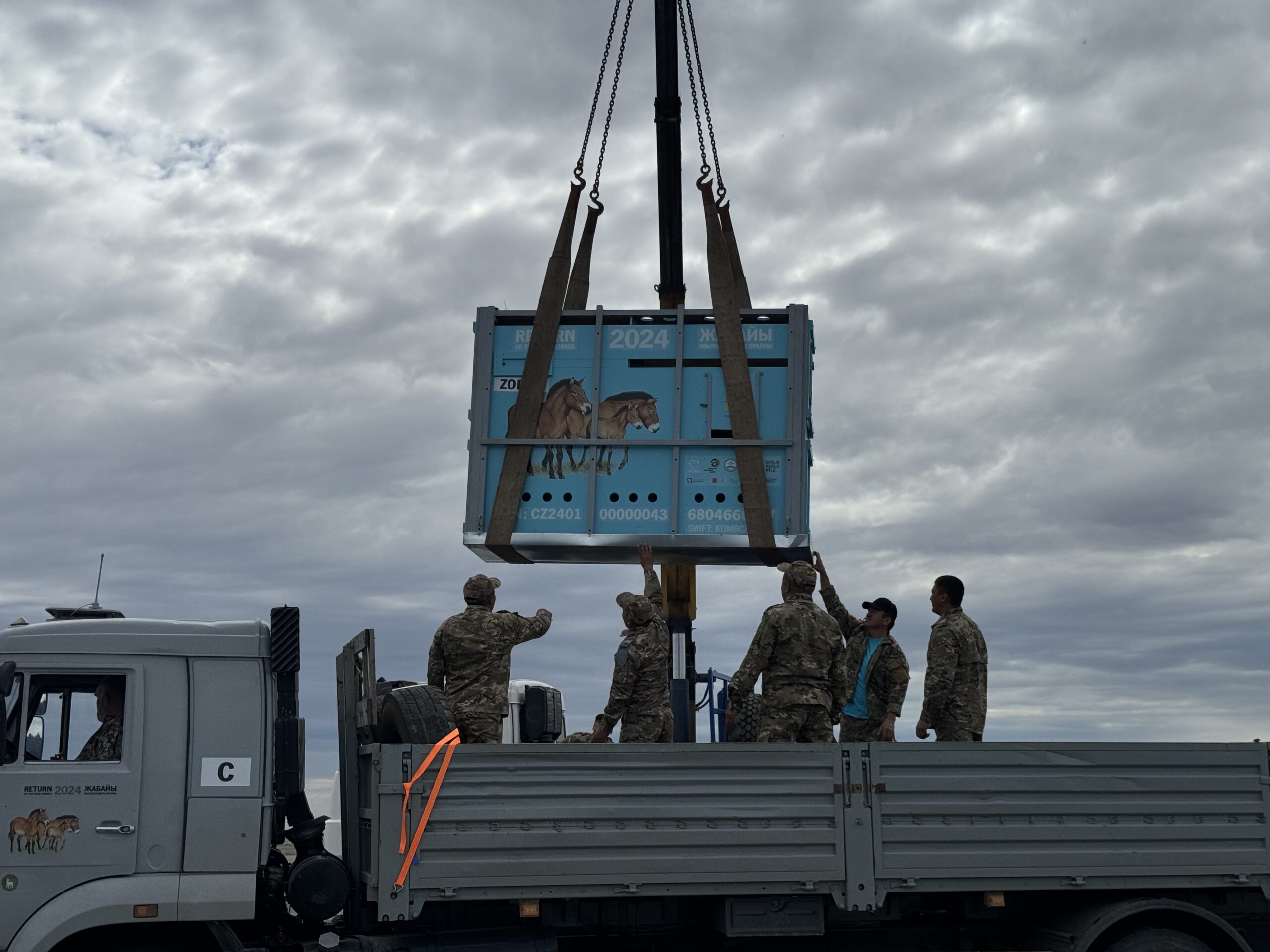
Using the cranes, box are placed safely into the trucks. Photo credit: Assel Satubaldina / The Astana Times
Minister of Ecology and Natural Resources Yerlan Nyssanbayev emphasized the return of Przewalski’s horses to the Kazakh steppe is a significant milestone in the ongoing efforts to conserve and restore Kazakhstan’s unique ecosystems.
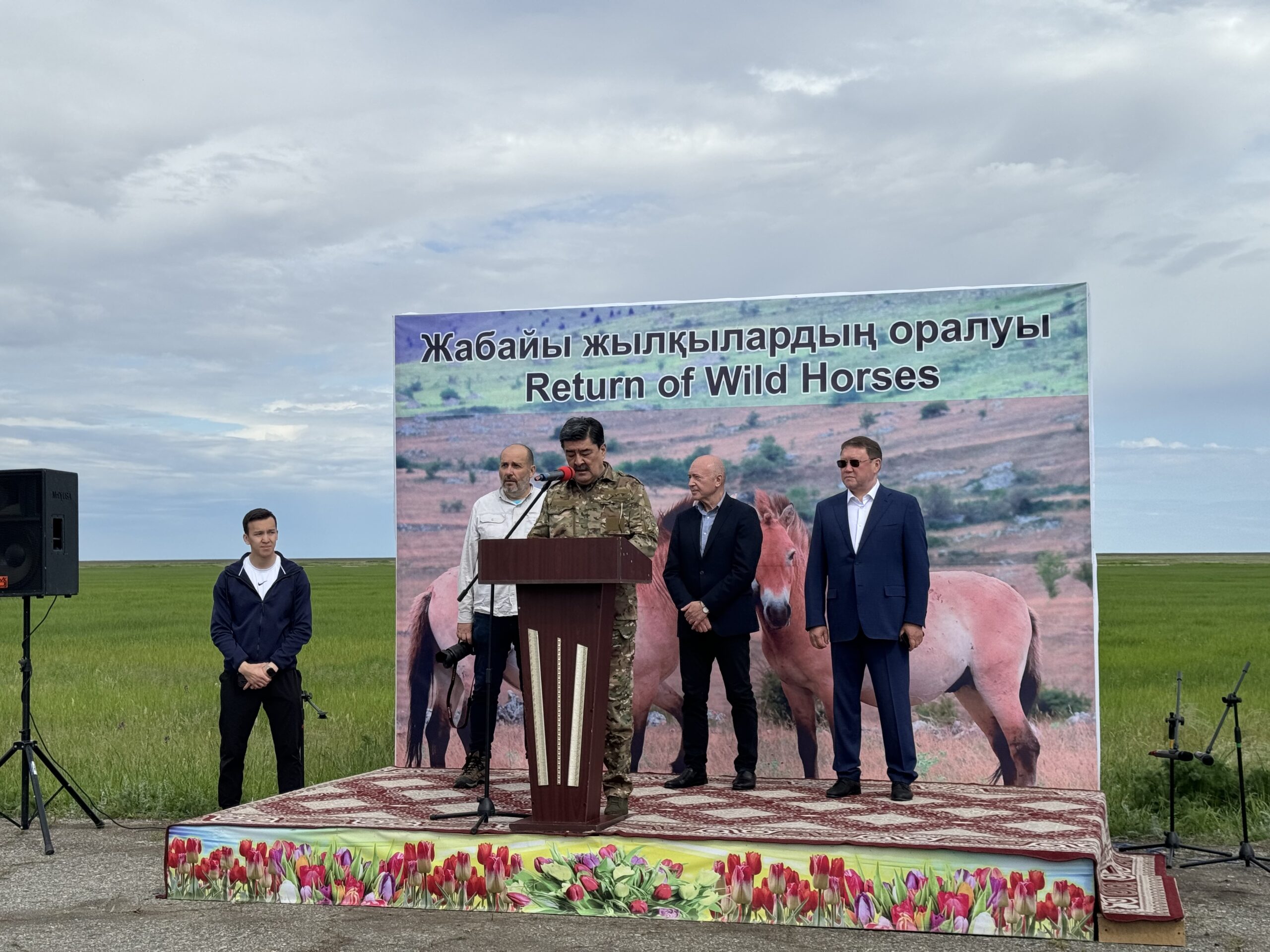
Minister Nyssanbayev delivers remarks at the ceremony. Behind him are Miroslav Bobek, Ambassador Pavol Šepel’ák and Kostanai Region Governor Kumar Aksakalov. Photo credit: Assel Satubaldina / The Astana Times
“Przewalski’s horses are the last wild species that managed to be preserved until the current time. Many years before that, Kertagy [a Kazakh name for the Przewalski’s species] was roaming the steppes of Eurasia,” said Nyssanbayev.
Ambassador of the Czech Republic Pavol Šepel’ák said this is a milestone for all animal lovers not only in Kazakhstan but throughout the world.
“I am very happy that we can return this beautiful animal to the land of its habitat. The project itself, which the Prague Zoo called the Return of Wild Horses 2024, has already had great success. The project itself was born in April 2023 during the visit of the Czech Prime Minister Petr Fiala to Astana. Back then, a memorandum was signed between Prague Zoo and the Ministry of Ecology of Kazakhstan. I am very glad that the first stage was accomplished in such a short period of time,” said the Czech diplomat, thanking everyone involved in the project.
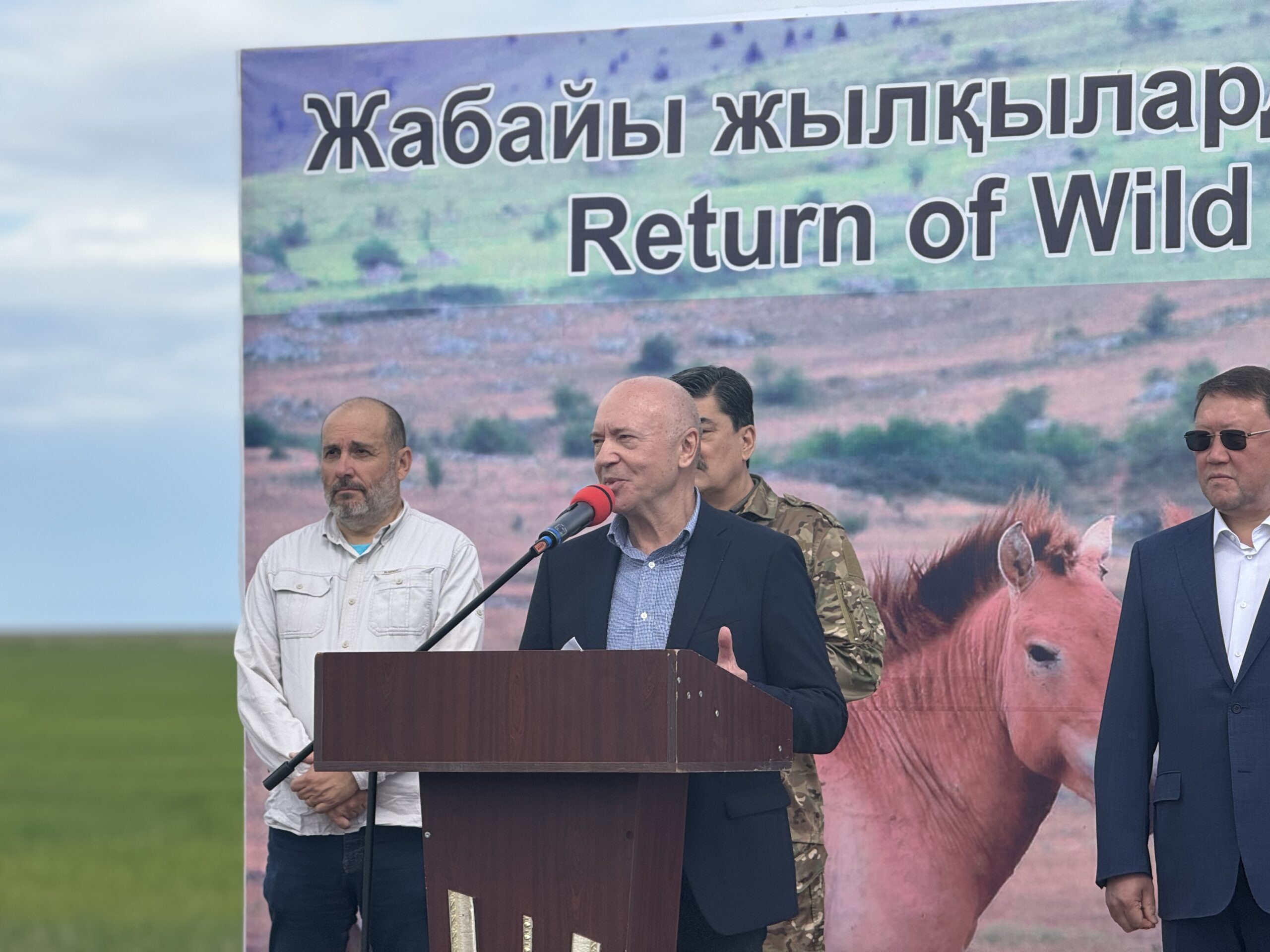
Ambassador Pavol Šepel’ák. Photo credit: Photo credit: Assel Satubaldina / The Astana Times
Commenting on the news, Roman Vassilenko said, “We in Kazakhstan are deeply grateful to our Czech friends for spearheading, underwriting, and executing this wonderful project.”
“We congratulate everyone involved, including colleagues at the Ministry of Environment and Natural Resources of Kazakhstan and the Kazakh Association of Biodiversity, for the bearing of fruit of the many months of preparatory work. Now the process of adaptation begins, which will hopefully bring back to life the famed Przewalski’s horses in the great steppes of Kazakhstan,” he said.
The Altyn Dala State Nature Reserve in the Kostanai Region, established in 2012 and spanning 489,766 hectares, has been designated as the release area.
Initially, the animals will be housed for a year at the Wild Ungulate Reintroduction Center within the reserve. This center, part of the Altyn Dala Conservation Initiative and managed by the Association for the Conservation of Biodiversity of Kazakhstan, has been used for restoration efforts, including the reintroduction of the Kulan or Asiatic wild ass since 2017. It is well-equipped with the necessary infrastructure and personnel to accommodate the species.
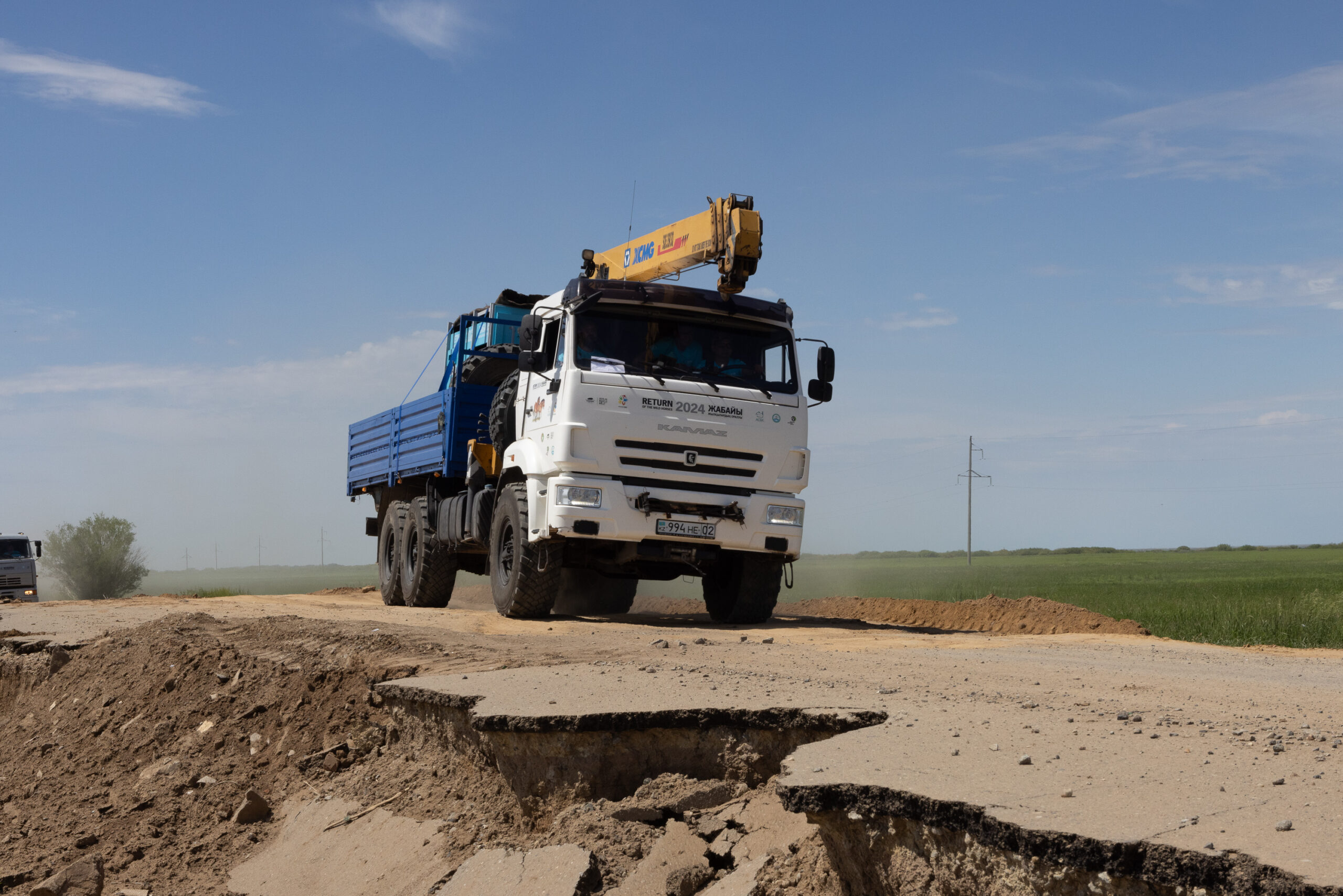
To reach the Altyn Dala reserve, the horses had to overcome a challenging road of nearly eight hours. Photo credit: Prague Zoo
“There, they will be monitored and the work will be carried out by veterinarians and scientific workers. Of course, we will consider how to form groups among these horses. They will continue to be monitored even after their release [into the wild],” Vera Voronova, an executive director of the association, told The Astana Times.
According to the association’s data, by the end of 2015, there were 14 Przewalski’s horses in Kazakhstan—four in the Almaty Zoo and 10 in the Altyn Emel State National Park.
The first horses were brought to the park from the Munich Zoo in Germany, followed by another group. They were initially kept in an enclosure and later released into the wild. Since then, some horses have died due to various causes, but their offspring continue to live. They can be found living freely in the national park.
